It’s been fifteen years since I first set foot in Death Valley National Park. The only thing I remember from my first trip was the bright sun, heat, and dry air that hit me each time I got out of the car. No wonder that Death Valley is the driest, hottest, and lowest place in the continental United States. This time, instead of driving through the park to stop at overlooks, I decided to experience the park in winter, when temperatures are more bearable. In this article – 3 days in Death Valley I’ve put together a three day itinerary, packed with useful tips and logistics to help you plan your dream trip and provide an overview of Death Valley’s unique attractions. If three days is too long for you, I’ve provided adjustments at the end for one-day and two-day adventures.
Table of Contents
3 day Death Valley itinerary map
The map below shows the attractions featured in this 3-day Death Valley itinerary. The map includes viewpoints and hiking. Click on the larger version of the map to see the details of the trip.
Day 1 in Death Valley
Start exploring Death Valley from the Furnace Creek area. This is where you will find the Visitor Center and most of the popular Death Valley attractions located close to each other.
Start at Zabriskie Point
Zabriskie Point was one of my favorite attractions in Death Valley. It is a popular spot to see sunrises and sunsets, and for a good reason. Watching the sun rise above the mountains and light the vibrant, golden colored badlands of Zabriskie Point is quite the experience.
Zabriskie Point is conveniently located a few miles south of Furnace Creek on California Highway 190. A short uphill walk from the parking lot will take you there. This spot gets lots of traffic at dawn and dusk and is especially popular with photographers. Surprisingly, right after sunrise, most people move on to their next destination. Patience is key if you want to have this overlook all to yourself.
For a closer look at badlands, follow the Badlands Loops trail. It is a 2.7-mile (4.3 km) moderate loop trail that starts from the Zabriskie Point parking lot. The trail connects to Golden Canyon, my next recommendation.
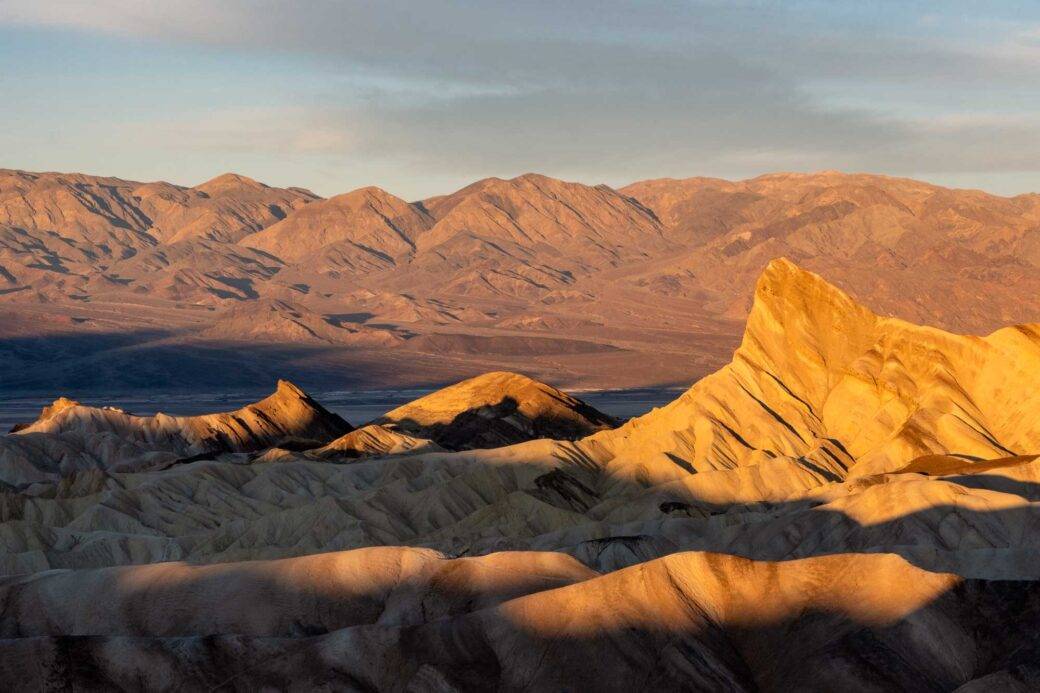
Explore Golden Canyon and hike the complete loop
You don’t want to miss the Golden Canyon trail. You will get to hike slot canyons surrounded by golden rock formations. Make it as long or as short as you’d like. You can stop by Red Cathedral to admire the looks from above. The views are spectacular, with layers of rocks and mountains in the distance. Return by taking Gower Gulch to hike around colorful badlands. If you’d like a longer alternative, continue to the Badlands Loops, which will take you to Zabriskie Point. The complete loop is 7.8 miles (12.5 km) and totally worth the effort. Consult this map to pick the best option for you.
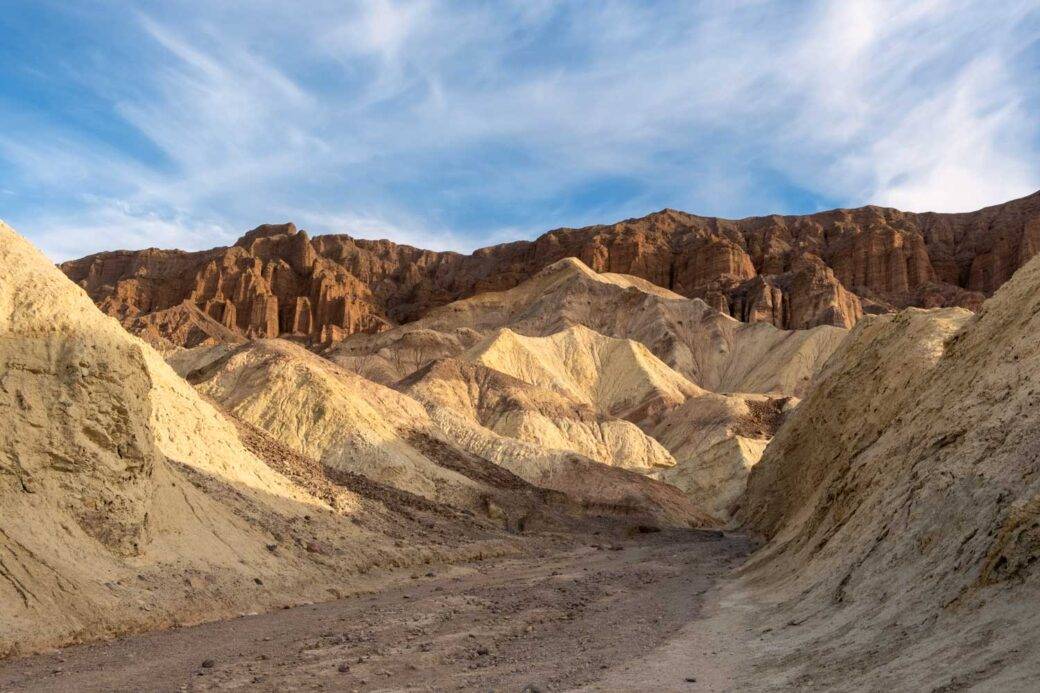
Hike Natural Bridge Canyon
Down the road from Golden Canyon, on Badwater Road, an unpaved road will take you to Natural Bridge Canyon. It is a short, 2-mile hike that leads to a natural bridge and a dry waterfall in the canyon. The bridge is quite impressive, standing 35 feet above the ground.
Examine salt flats at Badwater Basin
Following Badwater Road will bring you to Badwater Basin, the lowest point in North America. It is 282 feet (85.5 meters) below sea level. A few thousand years ago, the basin was a lake that evaporated, leaving layers of salt behind. During winter, you might find still water in the basin. The salt flats of Badwater Basin change constantly. As salt crystals expand, they form new patterns on the surface of the salt flat. Walk up to 2 miles (3.2 km) on the boardwalk and take a closer look at all the patterns. Be careful as you walk or stay on the boardwalk altogether to avoid crushing the Badwater snails that live under the salt crust.
Stop by Devil’s Golf Course
Next, move to Devil’s Golf Course, which is composed of crystallized salts that cover more than 200 square miles (518 square km). They are a residue of Death Valley’s last lake, which evaporated 2,000 years ago. There is no hiking trail, but you can explore on your own.
Be careful as you walk on the surface. A fall may easily result in a cut. If you’re visiting on a warm day, you might hear a cracking sound as the crystals expand and contract. Note that the road leading to Devil’s Golf Course is unpaved and often closed after rain.



Finish your day at Artist’s Drive and Artist’s Palette
Artist’s Drive is a 9-mile (15 km), one-way road that takes you through colorful rock formations. The highlight of the drive is Artist’s Palette, featuring mineral deposits in shades of green, pink, purple, yellow, and blue splashed across the slopes.
Artist’s Drive and Artist’s Palette are the result of repeated volcanic eruptions over 5 million years ago. Volcanic minerals were then chemically altered by heat, water, and oxygen, leaving this beautiful palette of colors behind. The intensity of color depends on the time of day you visit, clouds, and rain. It is a popular spot to visit at dusk, as the sun tends to intensify the effect. Wander around to find the most colorful hills.
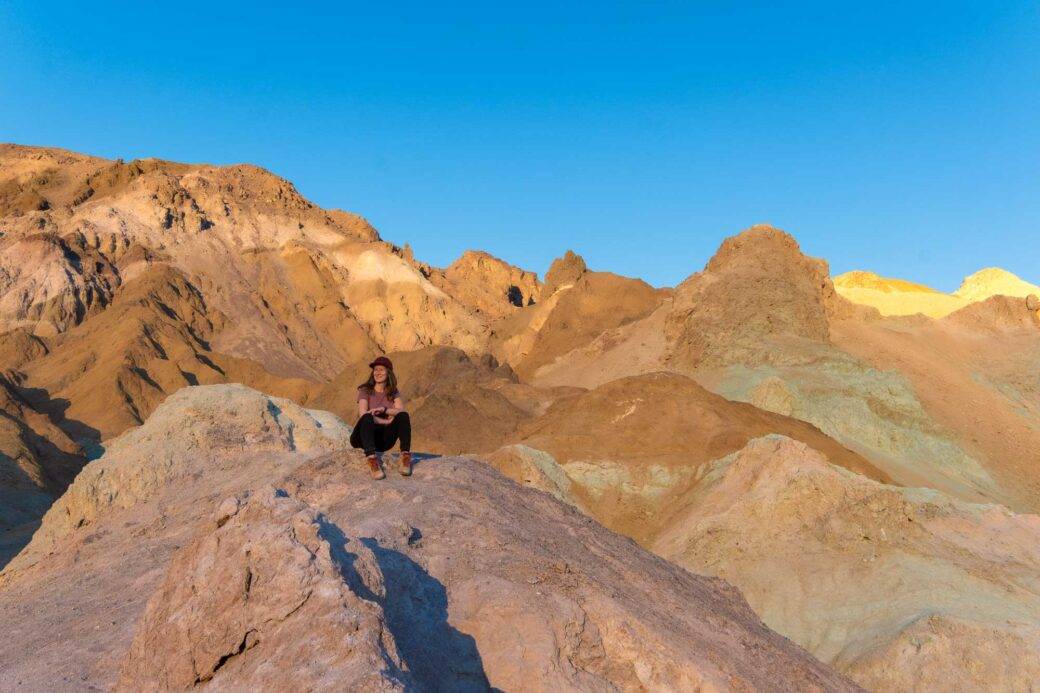
Day 2 in Death Valley
On day 2, venture out a bit further and maybe even make it to Racetrack Playa. Day 2 will require more driving, as Death Valley is huge and points of interest are further apart. Note that if you don’t have a four-wheel drive vehicle, skip Racerack Playa and start from Ubehebe Crater. Everything else is easily accessible.
Start your day at Racetrack Playa
Racetrack Playa is a dried lakebed nested between the mountains. It is northwest of Death Valley, and it takes 2.5 hours to get there from Furnace Creek. Because of the amount of driving, it is best to arrive early and then stop by other attractions on the way back. This way, you’ll get a chance to have it all to yourself. I’m sure you’ve heard about mysterious sliding rocks that puzzled scientists for ages. They finally realized that the rocks move, then the thin ice below them melts.
Racetrack Playa is accessible by unpaved road only. You will need a high clearance vehicle with heavy duty tires. This road, covered with sharp rocks, is known for causing flat tires. You can rent a jeep at Furnace Creek if you would like.
Hike around Ubehebe and Little Hebe Crater
On the way back from Racetrack Playa, stop by Ubehebe Crater. Even though it is one of many craters in the Ubehebe volcanic field, this one is the largest and the youngest. This crater, a result of a volcanic explosion, is up to is 0.5 miles (0.8 km) in diameter and about 500 feet (153 m) deep.
A 1.8-mile (2.9 km) loop rated as moderate will take you around the crater. You can also get inside if you’d like. If that’s not enough, hike to Little Ubehebe Crater, also called Little Hebe. Ubehebe Crater is an hour drive from Furnace Creek.

Look for signs of life at Salt Creek
Direct yourself back to Furnace Creek and stop by Salt Creek next. It always amazes me to see signs of life in a desert. Not surprisingly, where there is water, there is life. Even though Salt Creek is too salty for humans, it is a source of life for plants and animals. Salt Creek pupfish and pickleweed thrive here. Follow a wooden boardwalk for 0.8 miles (1.3 km).
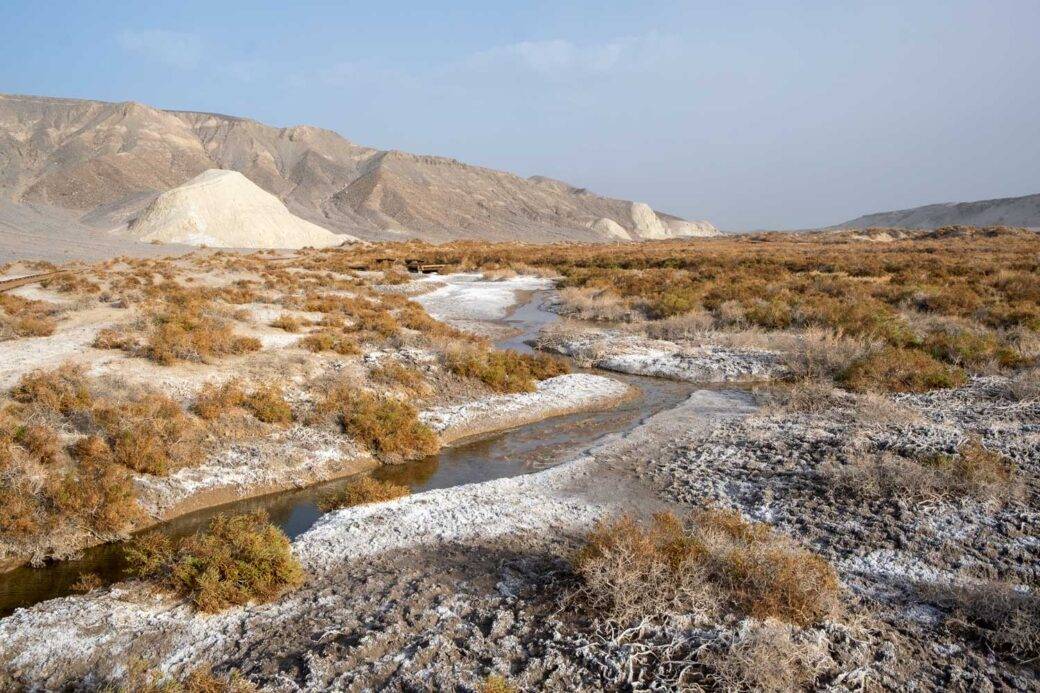
Learn about Harmony Borax Works
Next, stop by Harmony Borax Works and follow a 0.75-mile (1.2 km) interpretive trail. Here, you will learn about borax, “the white gold of the desert.” Borax was the most profitable mineral found in Death Valley.
Harmony Borax Works was one of Death Valley’s borax operations from the late 19th century. Borax was refined here by being separated from unwanted minerals and salts. Then, twenty mule teams carried the borax to the railroad town of Mojave. This 165-mile (266 km) journey across the desert took them 30 days to complete.
If you’re interested in learning more, stop by the Borax Museum located at the Furnace Creek Ranch.

Finish your day at Dante’s View
Dante’s View is one of the highest overlooks in Death Valley and very popular. It offers quite an impressive sight of the valley. From over 5000 feet (1,524 m) above the valley floor, you can see Badwater Basin at 282 feet (85.5) below the sea level.
Dante’s View is another popular spot to see sunrise or sunset. You can follow a 1-mile trail to explore the lookout from different directions and try to find some solitude. Dante’s View is located 26 miles (43 km) southeast from Furnace Creek. Even though it is a 45-minute drive, it is well worth a stop.
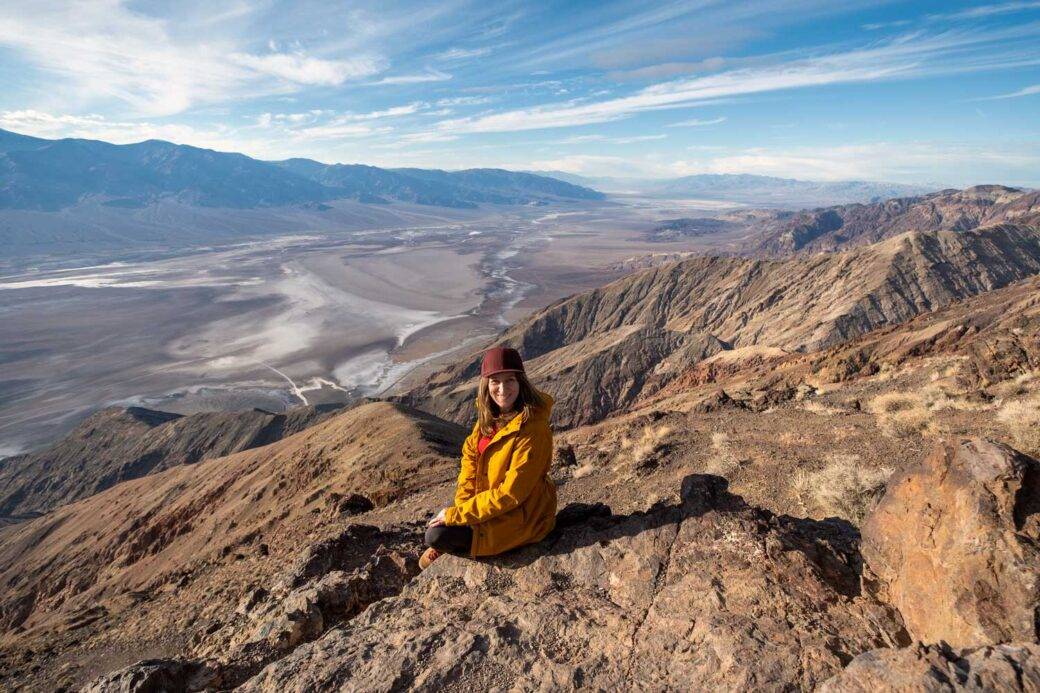
Day 3 in Death Valley
Spend day 3 venturing out even more and exploring more of the unique attractions of Death Valley. These attractions are spread apart, requiring more driving, but you will find more solitude. Note that the last two attractions are accessible by unpaved roads only.
Start your day at Mesquite Flat Dunes
If you’re going to explore sand dunes, stop by Mesquite Flat Dunes. Mesquite Flat Dunes reach up to 150 feet (46 m) and are surrounded by the mountains. Sunrise and sunset are best times to visit when the sun creates shades and contours, making the dunes look even more spectacular.
Mesquite Flat Dunes are located close to Stovepipe Wells Village. The ease of access makes them very popular. It will take you 2.8 miles (4.5 km) to follow the Mesquite Flat Dunes trail, but you can walk as far as you’d like and then turn back. The further you walk, the less footprints you’ll find. If you’re visiting during spring, you might be lucky enough to see wildflowers.
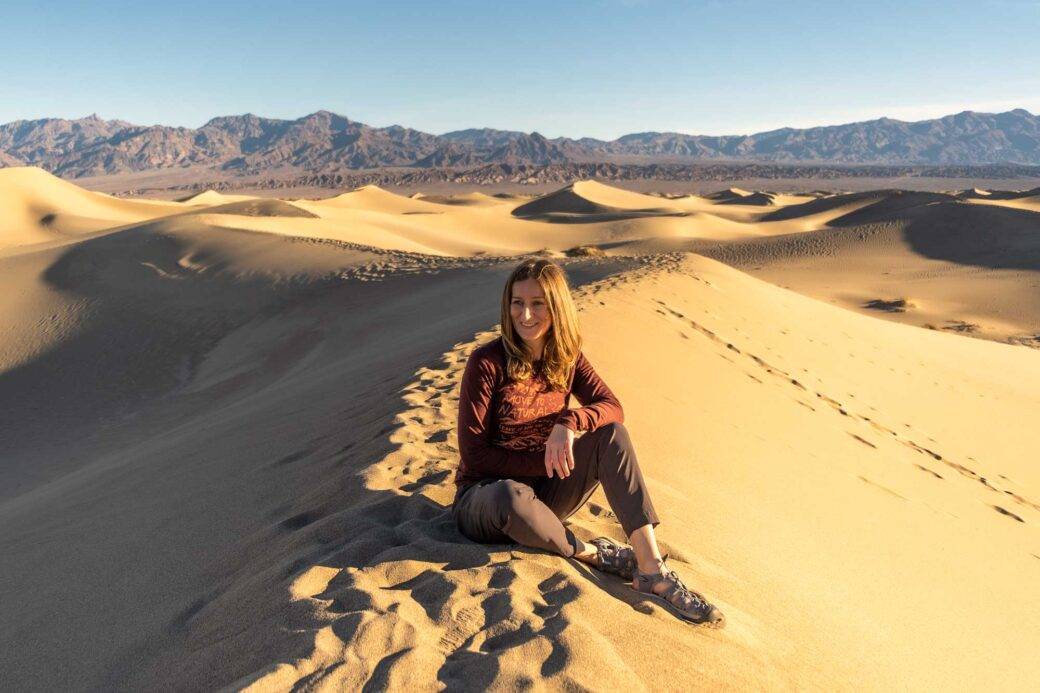
Explore nature’s murals in Mosaic Canyon
Located next to Mesquite Flat Dunes is Mosaic Canyon, a perfect spot for geology fans and adventure seekers. You can explore the canyon by following a 3.3-mile (5.3 km) out-and-back trail that takes you through the narrows to the canyon. The trail is rated as moderate. You will find dolomite and marble rocks mixed with sand, creating natural murals.
Find Darwin’s waterfall
Next, drive toward Darwin’s Canyon. Did you know that there is a waterfall in Death Valley? I loved finding water and signs of life at Death Valley. Hidden in a canyon, you will find a creek surrounded by lush green vegetation that will take you to the waterfall at the end before you turn around to go back. You will find Darwin’s waterfall in the Paramint Springs area. You have to follow an unpaved road to get there, but it is a short drive off 190. Make sure you check the road conditions before going there. The trail to the waterfall is only 1.9 miles (3 km).
Take a look at Wildrose Charcoal Kilns
Wildrose Charcoal Kilns, built in 1877, produced charcoal for two silver mines. Each kiln stands 25 feet (7.6 m) high and has a diameter of 30 feet (9.1 m). Charcoal was produced by burning the pinyon pine logs that were abundant in the area. This process took from six to eight days. These kilns are considered the best-preserved kilns in the west due to their location and limited use. Wildrose Charcoal Kilns were in operation for only three years.
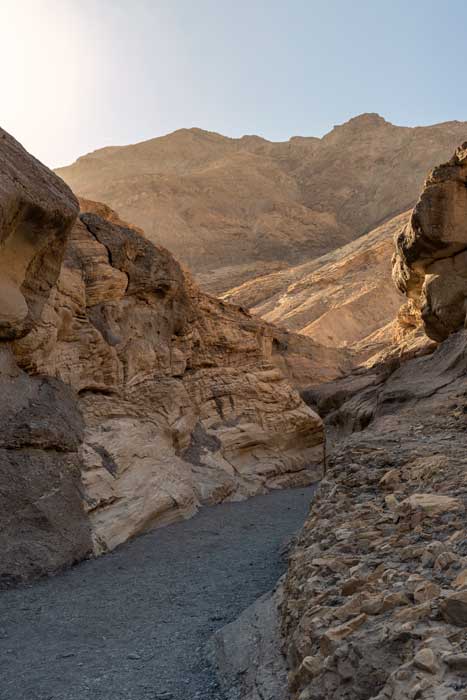


Admire vistas from Aguereberry Point
Aguereberry Point sits at 6,433 feet (1,961 m) high and is the highest overlook in Death Valley. It offers one of the most expansive vistas of Death Valley. You can see the white salt flats of Badwater Basin, the oasis at Furnace Creek, and Mount Charleston. If you’re looking for an alternative to Dante’s View or you want a place you can enjoy to yourself, Aguereberry Point is the place to be.
Note that getting here requires a four-wheel drive or high clearance vehicle, as there are places where the unpaved road becomes very narrow, almost one way. Proceed with caution.
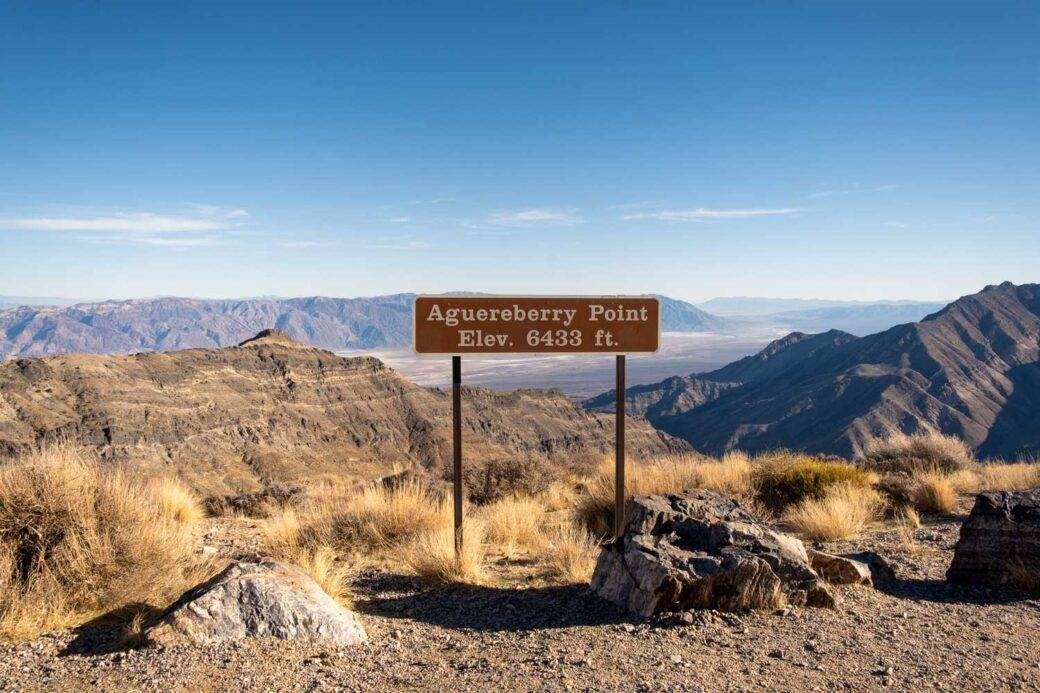
Finish your day at Skidoo Ghost Town
There are several ghost towns in Death Valley. I chose to visit Skidoo. There is not much left of this town other than ruins of a mill. The Skidoo mill extracted gold from ore and was one of the most profitable operations in Death Valley.
The scenery around Skidoo is beautiful. It is a perfect spot to enjoy a sunset if you want to stick around longer. The mill sits on a hill overlooking mountains. If you’re looking to have a place to yourself, look no further. There was not a soul there when I stopped by.
I don’t recommend visiting without a high clearance vehicle. Parts of the unpaved road leading to Skidoo are very narrow, making it difficult for two cars to pass.
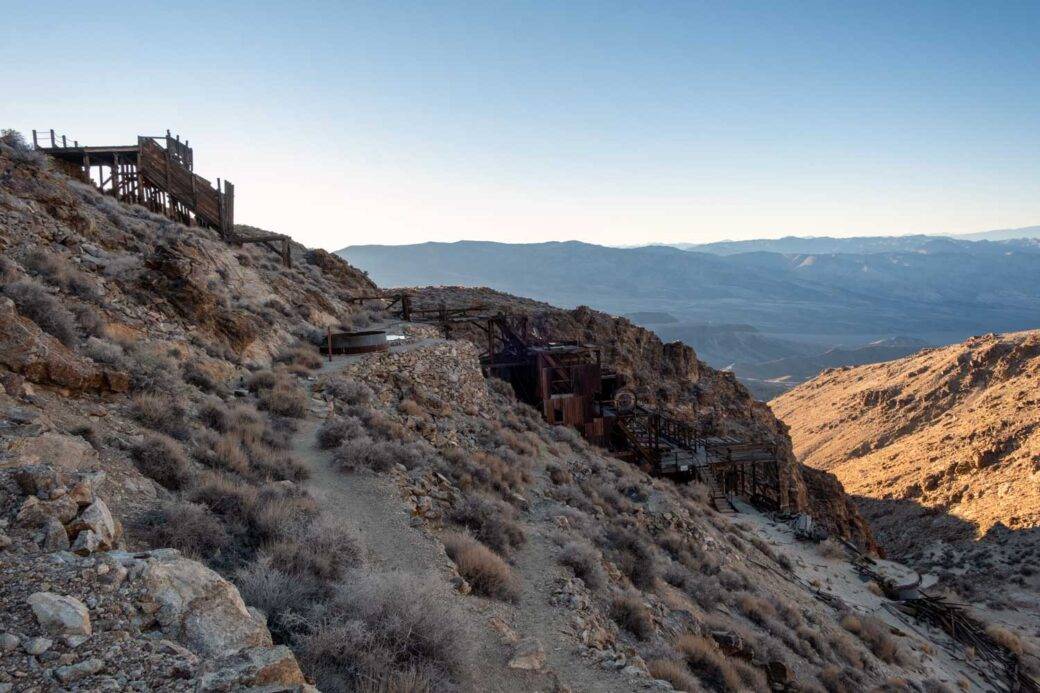
What to do with one day
Death Valley is large, and it could be challenging to try to see everything in one day. Start early to give yourself a head start in sightseeing everything you want to see.
If you only have one day to spend at Death Valley, I recommend that you focus on the most popular attractions in the Furnace Creek area from day one of my itinerary above. To give yourself more time, you might choose to skip hiking Gold Canyon and Natural Bridge. Add Dante’s View and Mesquite Flat Sand Dunes. Here’s my proposed itinerary:
- Sunrise at Dante’s View
- Zabriskie Point
- Golden Canyon (optional)
- Artist’s Drive and Artist’s Palette
- Natural Bridge (optional)
- Badwater Basin
- Devil’s Golf Course
- Sunset at Mesquite Flat Sand Dunes
Most of these attractions are a short drive from Furnace Creek, with Dante’s View being 45 minutes away and Mesquite Flat Sand Dunes being 30 minutes away from the Visitor Center. Hike as much or as little as you’d like. Grab some food at Furnace Creek, which has the best food selection in the park.
What to do with two days
If you have two days in Death Valley, follow the first two days from my itinerary. On day two, replace Racetrack Playa with Mesquite Flat Sand Dunes. All attractions from these two days are easily accessible by paved roads. Some might require a short drive on unpaved roads, but your car should be able to make it.
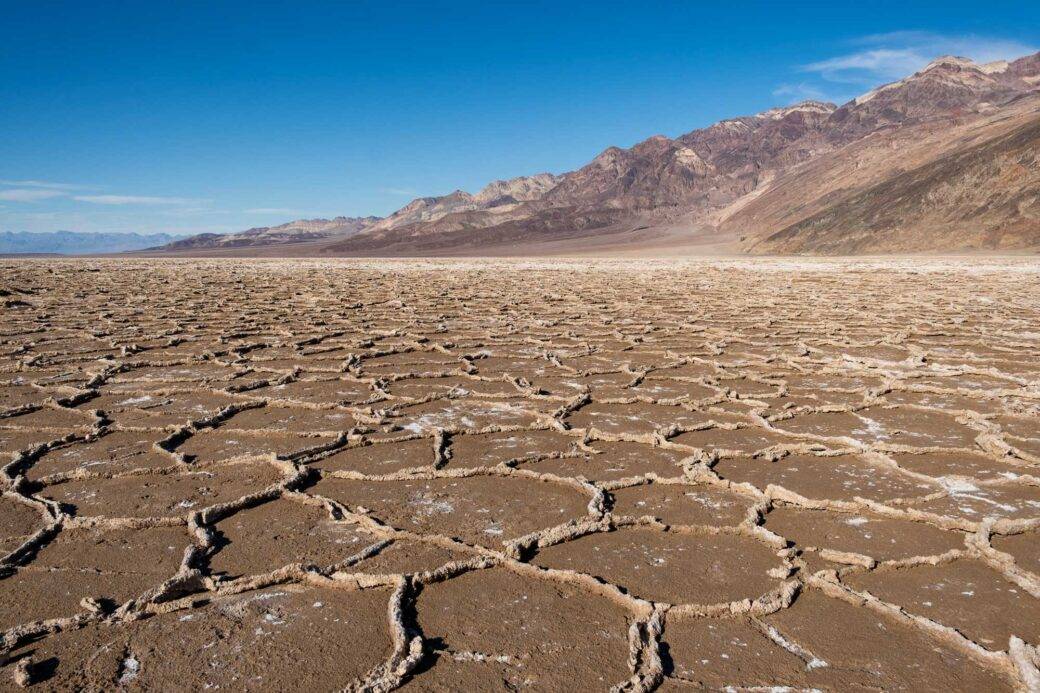
Tips for staying safe in Death Valley
- Death Valley can be extremely dry and hot, depending on when you visit. Drink at least a gallon of water a day and always have plenty of extra water with you in case of car trouble.
- Make sure your car is in good working condition. Have a spare tire and know how to change it if needed. Fill your gas tank before arriving at Death Valley. If your car breaks down, stay with the car until help arrives.
- Bring a cooler with food. There are several places to eat in Death Valley, but attractions are spread apart, and you don’t want to have to plan your trip around meals.
- Do not rely on GPS signal, as it might show roads that are closed. Download maps for offline navigation, and check road conditions before going anywhere. Bring a paper map and a compass to be safe.
- Do not rely on cell signal. It is very spotty and most of the time your cell phone won’t work at all. Consider bringing a satellite communicator in case of emergency.
- Dress for the desert. Pack broad-brimmed hat, sunglasses, sunscreen, and light-colored, lightweight, windproof clothes.
- Beware of flash floods. Do not hike canyons in rain.
- Do not hike in low elevations during hot days. All together, do not hike in summer. In hotter months, consider stopping at attractions on the valley floor early in the morning.
- Know what you want to do. Be aware that some attractions are not accessible without a four-wheel drive or high clearance vehicle.
- Check conditions of unpaved roads and be on the lookout for washouts. Maintain speed limits, as some unpaved roads can become very narrow and one way at times.
Overall
Death Valley is quite an impressive place to visit. There is something to explore for outdoor, geology, and history fans. If 3 days in Death Valley are too much, pick attractions that interest you the most. Are you ready to plan your trip but still have questions? Head to my guide to Death Valley where I share more details to help you plan your perfect trip.

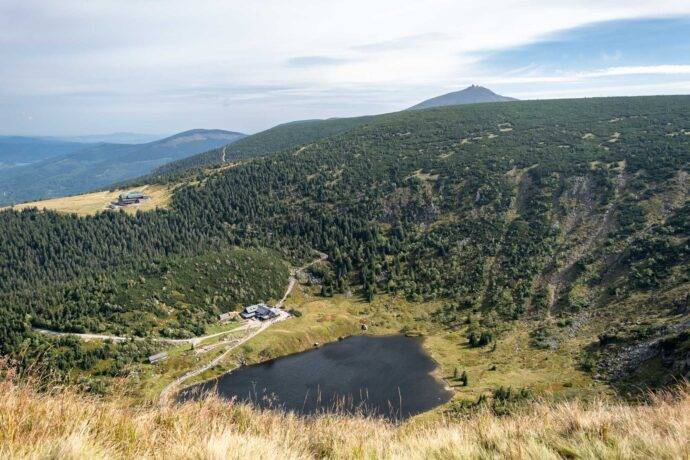

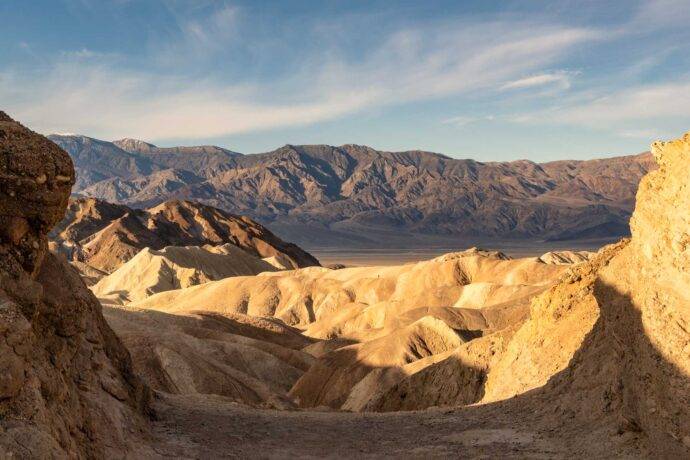

No comments